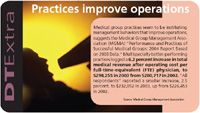- Acne
- Actinic Keratosis
- Aesthetics
- Alopecia
- Atopic Dermatitis
- Buy-and-Bill
- COVID-19
- Case-Based Roundtable
- Chronic Hand Eczema
- Chronic Spontaneous Urticaria
- Drug Watch
- Eczema
- General Dermatology
- Hidradenitis Suppurativa
- Melasma
- NP and PA
- Pediatric Dermatology
- Pigmentary Disorders
- Practice Management
- Precision Medicine and Biologics
- Prurigo Nodularis
- Psoriasis
- Psoriatic Arthritis
- Rare Disease
- Rosacea
- Skin Cancer
- Vitiligo
- Wound Care
Article
Clinical research centers require forethought
Scottsdale, Ariz. — In many ways, running a clinical research center is just like running any other business — those without a plan are likely to flounder.
Scottsdale, Ariz. - In many ways, running a clinical research center is just like running any other business - those without a plan are likely to flounder.

North America contains approximately 50 clinical centers that perform psoriasis research at least part of the time. However, Dr. Papp estimates that only five or six of these centers produce consistent, reliable results and offer solid track records for patient recruitment.

Many clinical research center operators are "unaware of their legal and clinical obligations," Dr. Papp tells Dermatology Times. "They often neglect their own standard operating procedures. Additionally, they don't have the checks in place to ensure that the conduct of the study at their site is monitored and reviewed appropriately. So when it comes time for an audit, whether it's by a study sponsor or health authority, there are often (negative) findings because they have not paid sufficient attention to details, or they're simply not aware of the details to which they have to pay attention."
The preceding problems exist in part because legal and financial requirements for starting a clinical research center were less stringent in the past. Current requirements, however, require operators to plan out everything from institutional guidelines and standard operating procedures to securing appropriate space (including necessary medical equipment) and staff. Operators also must understand regulatory requirements and legal obligations under treaties such as the Declaration of Helsinki.
"Someone who does not already have at least the fundamentals in place is not going to be considered for a clinical study," he observes.
Operators also must consider how they're going to structure their organizations. At one extreme, solo sites remain common, perhaps because they provide operators with complete autonomy over everything from hiring staff to conducting and documenting studies. However, Dr. Papp estimates that such sites sacrifice between 40 percent and 60 percent in terms of operating efficiency.
Site management organizations (SMOs), on the other hand, tend to assume all financial risks while providing space, manpower and other necessities. As such, joining such an organization can make sense for small or unestablished research centers or those for whom clinical research represents only a small portion of their business.
The investigator's role in an SMO arrangement remains limited technically, but not legally.
"In the case of psoriasis, the investigator is going to evaluate the degree, severity and extent of psoriasis, review adverse events and consider whether it's likely that the adverse event is associated with a study medication or not. They may also do a physical examination as required. But that's the end of their technical obligation. Legally, they're still obliged because as an investigator, one is ultimately responsible for the entire conduct by every person connected in any way with the study at their particular site," he says.
Consortia can provide research center operators with loosely structured affiliations that result in exposure to clinical studies that smaller organizations couldn't access on their own. Such arrangements allow members to function largely like solo sites, accepting and declining particular studies as they see fit.
Conversely, affiliations consist of a group of research centers that share contractual bonds with an umbrella organization (such as Probity Medical Research) that provides some of the services SMOs do. These can include background administrative work and regulatory and legal support, as well as a degree of financial protection.
Newsletter
Like what you’re reading? Subscribe to Dermatology Times for weekly updates on therapies, innovations, and real-world practice tips.











